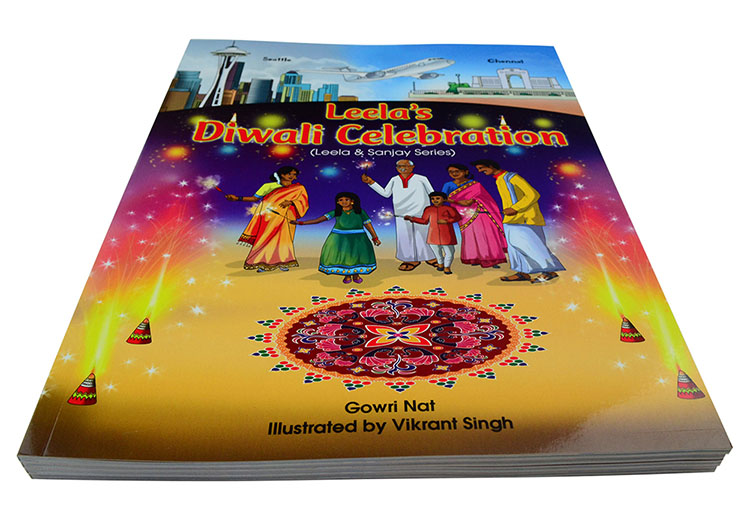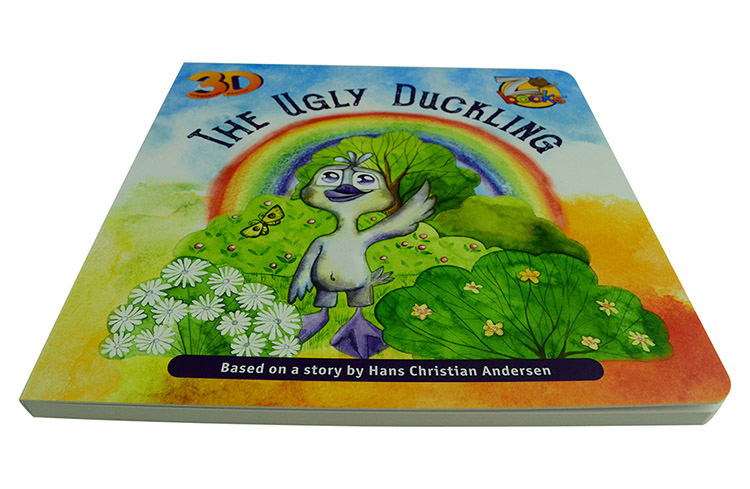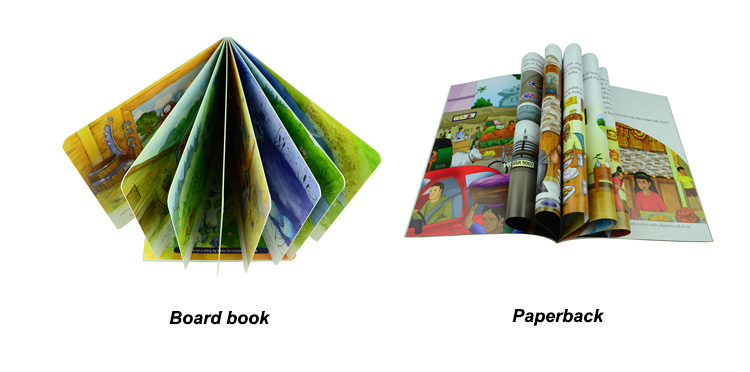In the world of children's books, there are two popular formats that parents often find themselves choosing between: board books and paperbacks. Each has its own unique features and advantages, making the decision a bit challenging. In this article, we will explore what exactly board books and paperbacks are, the key differences between them, and how to choose the right one for your child.
What's Paperback Book?

A paperback book, also known as a softcover book is a type of book that has a flexible cover made of paper or cardstock. It is the most common format for books targeted towards older children and adults. Paperbacks are lightweight, portable, and easy to carry around, making them convenient for travel and on-the-go reading. They generally have a larger number of pages compared to board books, allowing for more detailed illustrations and complex storytelling.
What is Board Book Means?

On the other hand, a board book is a type of book that is specifically designed for babies and toddlers. Unlike paperback or hardcover books, board books have thick, sturdy pages made from cardboard or heavy paperboard. The pages are typically laminating to make them resistant to spills, tears, and other forms of damage. Board books are usually smaller in size, making them easier for little hands to hold and manipulate.
Board books are specifically created to withstand the rough handling that often comes with young children. They are designed to be chewed, drooled on, and thrown around without sustaining significant damage. The thick, durable pages make it easier for young children to turn the pages themselves and explore the book independently.
Board books are intended for infants and toddlers, typically ranging from newborn to around three years old. They are designed to be interactive and engaging, with simple and repetitive text, bright and colorful illustrations, and tactile elements such as textures or lift-the-flap features. These features help stimulate a child's senses and promote early literacy skills. Board books are also a great tool for introducing concepts like shapes, colors, numbers, and animals to young children.
What Age is Board Book for Baby?
Board books are intended for infants and toddlers, typically ranging from newborn to around three years old. The sturdy construction of board books makes them safe for even the youngest readers, who are known for their tendency to explore objects with their mouths. The thick pages are resistant to tearing and chewing, ensuring that the book remains intact and free from any potential choking hazards.
Board books are specifically designed to cater to the developmental needs and interests of infants and toddlers. They are designed to be interactive and engaging, with simple and repetitive text, bright and colorful illustrations, and tactile elements such as textures or lift-the-flap features. The simple and repetitive text helps babies develop language skills and vocabulary. The colorful illustrations capture their attention and stimulate their visual senses. Additionally, the tactile elements found in many board books, such as different textures to touch or flaps to lift, encourage sensory exploration and fine motor skill development. These features help stimulate a child's senses and promote early literacy skills. Board books are also a great tool for introducing concepts like shapes, colors, numbers, and animals to young children.
The Advantage of Paperback
Paperback books offer several advantages that make them appealing to readers of all ages. Firstly, the flexible cover of paperback books makes them lightweight and easy to carry around. This portability allows readers to take their books with them wherever they go, whether it's on a daily commute or a vacation.
Secondly, paperback books are often more affordable compared to board books and hardcovers. The lower production costs, result in lower retail prices. This affordability makes paperback books an excellent choice for those on a budget or avid readers who consume books at a rapid pace.
Thirdly, paperback books are more flexible in terms of reading comfort. The pliability of the cover allows readers to comfortably hold the book in one hand, making it easier to read while lounging or lying down.
Paperbacks also offer a wider variety of titles compared to board books. They cover a wide range of genres and topics, from classic literature to contemporary fiction, non-fiction, and educational books. This gives readers, including older children, access to a greater variety of reading materials and helps foster a love for reading and exploration of different genres.
The Advantage of Board Book
While paperbacks have their advantages, board books offer a unique set of benefits that cater specifically to the needs of babies and toddlers. One of the most significant advantages of board books is their durability. With their thick, sturdy pages, board books are designed to withstand rough handling, bending, and even chewing. This durability ensures that the book can withstand the test of time and countless reading sessions with young children.
Another advantage of board books is their interactivity. Many board books are designed with engaging features such as textures to touch, flaps to lift, or even sound buttons to press. These interactive elements help keep young readers engaged, stimulate their senses, and promote early literacy skills.
Board books also have the advantage of being easy for young children to handle and manipulate. Their smaller size and thicker pages make them ideal for little hands to hold and turn the pages independently. This promotes a sense of autonomy and independence in young readers, allowing them to explore books on their own and develop a love for reading from an early age.
Lastly, board books are ideal for introducing young children to the joy of reading. The simple and repetitive text helps build early language skills and vocabulary. The illustrations in board books are often bright, bold, and engaging, capturing the attention and imagination of young readers. Board books often focus on familiar concepts, such as colors, shapes, and animals, making them relatable and engaging for young readers.
What is the Difference Between Paperback and Board Book?

The main difference between paperback and board books lies in their construction and intended audience. Paperback books have a flexible cover made of paper or cardstock, making them lightweight and portable. They are targeted towards older children and adults, offering a wider range of genres and topics. On the other hand, board books are specifically designed for babies and toddlers, with thick cardboard pages that are durable and resistant to wear and tear.
Another key difference is the age range for each type of book. Paperback books are suitable for older children and adults. Board books cater to the developmental needs and interests of babies and toddlers. Paperback books often have more pages, allowing for more intricate storytelling and detailed illustrations. Board books, on the other hand, have simple and repetitive text, vibrant illustrations, and interactive features that engage young readers.
In terms of price, paperbacks are generally more affordable than board books. The production cost of paperbacks is lower, making them a more budget-friendly option for parents or avid readers. Board books, on the other hand, tend to be more expensive due to their sturdier construction and specialized features.
Board Book or Paperback: How to Choose
When it comes to choosing between board books and paperbacks, there are a few factors to consider. Firstly, the age of your child is an important consideration. If you have a baby or toddler, board books are the ideal choice due to their durability and interactive features. On the other hand, if you have an older child or are looking for books for yourself, paperbacks offer a wider range of genres and topics to choose from.
The content and purpose of the book are also important factors to consider. If you are looking for books to introduce concepts like shapes, colors, or numbers to your child, board books are a great option. They are specifically designed to engage young readers and promote early literacy skills. However, if you're looking for more complex storytelling or educational content, paperbacks may be a better choice.
Finally, budget and personal preferences also come into play. If portability and affordability are essential, paperback books are the way to go. However, if durability and ease of use for young children are important, board books are the better option.
In conclusion, both board books and paperbacks have their own unique advantages and cater to different age groups and reading needs. Whether you choose a board book or a paperback, the most important thing is to foster a love for reading and provide age-appropriate books that engage and inspire young minds.
Get in touch
If you're interested in creating custom board books for your child or as a gift, we are OEM board book custom printing manufacturer here to help. We specialize in high-quality board book printing and can bring your unique ideas to life. Contact us today to discuss your requirements and let us create a special board book that your child will cherish for years to come.


